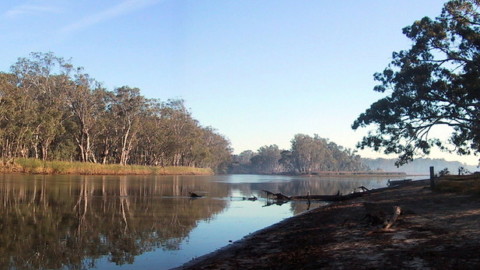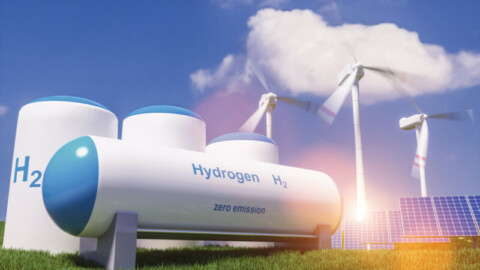Barcaldine Regional Council prides itself on being a thriving, hospitable area, situated in the heart of central western Queensland. The region hosts a rich culture in a beautifully diverse region. When the Council experienced drinking water quality issues from high chlorate levels and an unpredictable source of sodium hypochlorite, it knew it needed to get help from water experts.
Background
 Two towns in the region, Jericho and Alpha, located near Barcaldine, just over 1000km northwest of Brisbane, were affected by low water quality. In the town of Alpha, raw water supply comes from five bores with quality concerns including high levels of alkalinity, total dissolved solids (TDS), silicates and chlorides. Furthermore, the water did not comply to Australian Drinking Water Guidelines (ADWG).
Two towns in the region, Jericho and Alpha, located near Barcaldine, just over 1000km northwest of Brisbane, were affected by low water quality. In the town of Alpha, raw water supply comes from five bores with quality concerns including high levels of alkalinity, total dissolved solids (TDS), silicates and chlorides. Furthermore, the water did not comply to Australian Drinking Water Guidelines (ADWG).
Primary chlorine dosing with sodium hypochlorite resulted in poor drinking water quality, with high chloride levels over the recommended aesthetic limit set in the ADWG. The sodium hypochlorite has significant rate of decay, resulting in rapidly changing available chlorine levels. This makes maintaining chlorine concentration difficult in production of final drinking water. After reviewing the water treatment plant, Dr Peter Mosse, Director, Hydrological, recommended in a report to consider implementing an alternate strategy for primary chlorination.
Des Lamb, Town Supervisor for Barcaldine Regional Council, enlisted the help of Rulani Janse van Rensburg, Sales Engineer with Lonza Water Treatment ANZ. Together they decided changing the primary chlorination system to a briquette calcium hypochlorite system would be beneficial, reducing chlorate levels and improving water quality to keep within the aesthetic limits of the ADWG.
Solving water quality concerns
The pre-existing sodium hypochlorite system brought several concerns for Barcaldine Regional Council. First, the chlorine residual set point was extremely difficult to maintain between 1 and 1.2ppm.
The Council also experienced operational issues with the source and supply of sodium hypochlorite.
- Initially, the liquid was purchased in bulk, 1000 litres at a time. This was done on a ‘milk run’ which meant the truck only delivered West when there was sufficient orders to fill the bulk tanker
- There is only one storage tank at the plant for sodium hypochlorite. This meant fresh product was being delivered into this tank which still contained older deteriorated product. Consequently, the strength of the starting solution was unknown
- The solution deteriorated even further after delivery, particularly in summer time, causing dosing levels to be gradually increased to keep the same chlorine set point
In addition, gassing in dosing lines created problems. Moreover, with oxidation, chlorate levels increased in the sodium hypochlorite solution over time and resulted in high chlorate levels in the final drinking water.
Prior to solving its drinking water dilemma with calcium hypochlorite, Barcaldine Regional Council tried purchasing sodium hypochlorite in 200-litre drums. Unfortunately, that resulted in greater issues than its bulk supply:
- Higher costs than bulk
- Drums needed to be manhandled and decanted into the larger storage tank, posing an increased risk to operators
- Chlorate levels continued to be high in the final drinking water
After much consideration, the Council decided to trial a Constant Chlor® Chlorination System, which feeds hth® Calcium Hypochlorite Briquettes. The benefits were clear:
 The low cost of install with an easier maintenance schedule
The low cost of install with an easier maintenance schedule
The Constant Chlor® MC4-50 feeder installation is quick, easy and relatively inexpensive. The in-house maintenance team installed the system in only a few hours.
Any required maintenance is highly dependent on the feedwater quality and with the high alkalinity and hardness levels in the water feeding the system, initially, minor scaling problems required the hopper and spray nozzles to be regularly cleaned. To remedy the issue, the feedwater supply was changed to the aerodrome bore which has a much lower alkalinity and hardness level. This reduced the required feeder maintenance from every month, to every three months.
Cleaning the hopper takes less than 30 minutes, a reduction the team is enjoying.
What’s the latest?
To date, Barcaldine Regional Council is greatly satisfied with the Constant Chlor® MC4-50 system. The chlorination system is simple to use, runs smoothly, and the hth® Calcium Hypochlorite Briquettes have been a reliable supply of chlorine. The plant personnel can now maintain chlorine levels in final drinking water of between 1 and 1.2ppm Cl2 set point more than 90 per cent of the time.
Council decided to change sodium hypochlorite dosing at its Jericho water treatment plant to the same Constant Chlor® MC4-50 system not long after the positive results at the Alpha water treatment plant, and now, no more sodium hypochlorite supply issues are further experienced by council.
 A regulatory status change for chlorate in drinking water
A regulatory status change for chlorate in drinking water
International research from the World Health Organization (WHO) and the American Water Works Association (AWWA) indicates that chlorate presents a potential health risk to consumers. It causes damage to red blood cells and demonstrated perturbation of thyroid cells.
WHO has established a provisional guideline of 0.7 ppm.
Australian Drinking Water Guidelines had established a limit at 0.8 ppm. ADWG is expected to be updated – a previous draft in 2009 included a chlorate health limit of 0.3ppm.
Robust debate is ongoing due to insufficient data to set guideline value.
 This partner content is brought to you by Lonza. For more information, visit https://www.lonzawatertreatment.com.au/applications/potable-water.
This partner content is brought to you by Lonza. For more information, visit https://www.lonzawatertreatment.com.au/applications/potable-water.

















